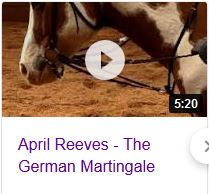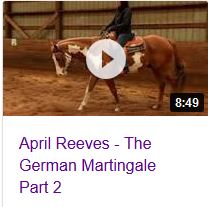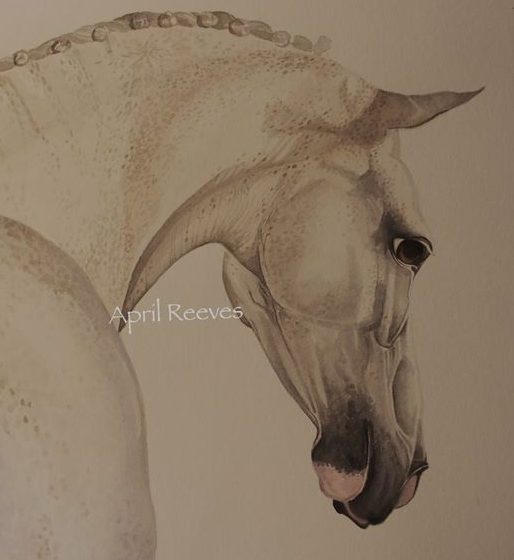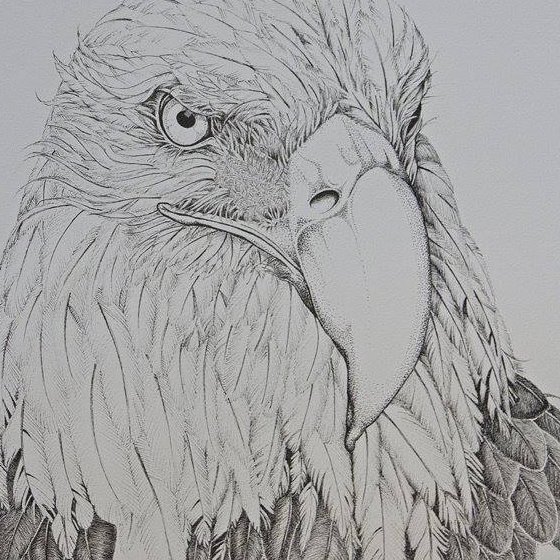Comment from Horse Enthusiast writes: I knew this trainer who had a really angry paint filly- she was vicious when the owner gave her to him for nothing- and he managed to train her enough that she was easy to handle which was a big accomplishment considering if you showed up with a halter she would run you down, but she still pulled back when tied and riding she would blow up really badly on occasion, or at least that was the state she was at when I left…
I don’t know her history or how she’s doing now as I haven’t seen her since spring… Anyway he wasn’t my ideal trainer as he was the “old” cowboy type and would run the snot out of a bronc horse, no matter what age. (this filly was only three and he was cantering and loping her constantly and working her really hard).
But the trick he used to get this filly to accept the bit, because she was terrible of course, was to turn her out with the bridle. (no reins)
Would you ever even consider this in the most dire situation or would you just give up and go bitless? My big fear at the time was that she would catch the ring of the snaffle on a part of the fence or something and rip her mouth apart in a panic, but luckily she didn’t but she actually became easier to bit and was less resistant to it after a week or so. But still, I think that’s too risky…
Just curious :)
Answer from April Reeves: There are many ways to ask a horse to accept a bit, and although many of those ways end up with a horse that will “take” a bit, the question remains, “Is there a better way?” I have had to work with some of the toughest of bitters, and have barely had as much as a fight or future problem.
First off I want to address riding a 3 year old hard. Anyone that’s spent any time on this blog knows I don’t approve of riding young horses hard, and it’s not because of their legs, but their backs and neck vertebrae are still developing, and that’s where I see, later in their lives, a whole series of problems and issues to deal with that are often chronic and non-fixable. I get more from a young horse with short amounts of work done slowly. The slower you go, the faster the horse learns. If you are consistent….
On bitting tough horses: I would never put a bit on a horse and send them out. I agree with you: if there is a place for that bit and bridle to get caught on, a horse will find it. For those that say they do this all the time, you are just lucky so far. Plus, as a trainer working with other people’s pets, you don’t put them in harm’s way. You just don’t. You don’t even put your own horse in harm’s way, but you really must treat a client’s horse the way you would treat your own (here’s hoping you treat horses beautifully).
Keeping a bit in a horse’s mouth, to me, does nothing to improve the horse’s ability to accept the bit every time. The point of repeating the bitting process is the training, not the length of time in a mouth. In some cases I can see a horse resenting this even more. I want my horses to like the bit. I ask that they drop their heads and open their mouths and place the bit in their mouths, not me having to do this for them. Several things need to be in place for this:
1. The bit must be clean and warm. Sometimes a rubber bit is best as it won’t clunk against their teeth.
2. It must follow with a treat.
3. The headstall must be easy to put on and adjust: nothing complicated or fancy. I take off the browband and the throatlatch unless the horse is very comfortable with headstalls, but a horse like this usually doesn’t have bitting issues.
4. The horse’s teeth must be checked by a vet first. Funny how some ‘trainers’ seem to bypass this important issue.
Explaining “how” I go about teaching a horse that’s bit sour is not easy to describe in an article, but I will try. You really need to see it as there are subtle moves that are more about timing than anything else. And listening: you need to listen to the horse and have the patience to wait for the right answer.
This is where you really begin to understand how you set up patterns of “training” in a horse. These patterns can be good or bad, depending on your timing. The horse has NO idea what is good and bad: this is a human interpretation.
The first thing I do is get a pocket full of small carrot bits and use a halter only and have a handler at the lead. I will softly place my right hand under the face and gently over onto the bridge of the nose, but not applying pressure. The horse must be free from restriction. You must never let this hand slip, ever (not an easy task). With my left hand, I will place it in the horse’s mouth, getting the horse use to having someone play with their gums and tongue. I try to get as far up into the mouth as possible. With a difficult horse, this could take up to 2 hours. Here is where timing IS EVERYTHING. When the horse pulls away, you must follow them and keep your left hand in or close to their mouth. If the horse pulls away and you lose the horse with your hands every time, you are setting the horse up to be trained to move away when hands come close (see how important this is?)! This is also why you need to go slow and soft: if you get demanding, chances are you will lose contact with the horse too many times, and you will set up an even tougher pattern of behavior you don’t want. Ego and anger play no part in good training. Every time the horse submits and surrenders, take your hands away, but not until the horse is quiet and accepting.
(Side note: not all horses like carrots. I supplement feed every horse, and they have a serious addiction to Step 2 Extruded ‘crunchies’, which I use instead of carrots. But for writing sake, carrots will be our ‘little helper’ in this article).
The carrots come in when the horse stands quietly and allows you to play with their mouth. Once they surrender, get a carrot piece and give it to the horse. They will look for more – expect it but don’t punish it. Horses that are treated responsibly will know the sign for when they can and cannot get a treat, eventually. Reward is an important role in establishing “bonds” with horses. Are you bribing them with treats? I use to think so, but having used them regularly for a few years now, I wonder why I didn’t use them earlier. I find treats, given correctly, can speed up many of the training I do. Live and learn…
I allow the horse to move around a bit, so the handler must allow the feet to move without the feet taking off. A good handler is worth their weight in gold.
For really spoiled horses, I will do this every day for as many days as it takes to get the horse use to my handling – until the head does not go up, or the feet move. The horse must be fully accepting of this process. Take your time now or you will take twice as much time later: choose wisely.
Should you do the above fully and completely, bitting is barely an issue, unless the horse has had prior pain from a bit: this is a whole different set of problems. Young horses tend to really like this process, and you should find bitting to be easy after.
The next thing I do is make sure the bit is either soft (rubber, so it doesn’t clunk against the teeth) or thin mouthed. You will not be riding the horse in a bit until that horse is completely comfortable with it, so don’t worry about the mouthpiece not being the correct one for riding in. This is about training the horse to accept it. Remember: what is the lesson? The lesson is singular. Don’t lose the lesson…
I like to place my right hand over the poll and hold the crown of the headstall. That way the horse gets use to a hand above their eye. Often, horses are uncomfortable with hands above their eyes. I believe your horse should get use to your hands anywhere on them, and this is a good place to start. It’s also a good place for me to move with the horse as they dip and bob their heads in avoidance.
My left hand is on the bit, but I won’t try to bit the horse right away. My first lesson is to get the horse use to me being there, and I will follow their head where ever it goes (for most of them, I still have a handler holding a lead line attached to a halter under the headstall). I don’t want the horse to wander off but I don’t like horses being restricted: they need to know they can move their feet, but can’t get rid of me.
If this is a young horse, you shouldn’t have too many problems, but I am writing this under the assumption the horse is really tough. So, put your “patient” hat on, unplug the phone and let’s go to work.
You want the same reaction: stand quiet while I have a bit in my hand and a finger in your mouth. Once the horse is quiet and accepting, drop the bit and treat the horse. Continue the above, and follow that horse’s head where ever it goes. This is always the fun part, because I make it sound easy, but it’s not. Some horses are very crafty, especially the older ones that have been scarred badly. You will need exceptional patience. You can do it!
The turning point is when the horse feels the bit against the teeth. Careful here. I have had horses blow over backwards, even though I had my fingers in their mouths for 3 days with no problems. This is history, and you may not be privy to the abuse a horse may have endured. This is where compassion comes in, because there are horses you will never bit. Listen and watch the reaction of the horse you are working with. If the horse does begin to settle (and those signs can be very small, but if you pay attention you will spot them, and remember, what may be small to you is a really big deal to a horse) you have the green light to continue. Once in a lifetime, if you do this work enough, you will run into a horse that does not deserve a bit: usually from prior abuse, in which case I will surrender my work, play with their gums and teeth and find an alternative to a bit. There are many alternatives out there, and unless you are showing, there is no reason to subject a horse to more torture. Some things are best laid to rest…
But there is a big difference between a horse that has been terribly abused and a horse that has been craftily trained to avoid a bit.
Most times the horse will eventually come around and once you are able to open the mouth wide without a fight, you can attempt to slip the bit in. Do this quickly and gently: timing must be on your side here. Do not rush this, as you don’t want the bit to hit the teeth. Take your time and get that mouth open for more than 1/10 of a second! Once you have the bit in, gently but quickly get the headstall on. Then it’s treat time: that horse must find a reward at the end of this. For a young horse, the first bit in the mouth will also be met with trouble eating, so don’t overload the carrot pieces.
So, the easy part is now over. NOW you have to take the bit OUT. This can sometimes break the whole lesson. Often, people get excited and pull the bridle off, which gets stuck on the teeth on the way out, and the horse throws their head up really high, pulls backward and you end up hurting the horse or scaring him and the whole 3 days of work was for nothing. So, once again, you are going to use timing and patience, and wait until that horse has their mouth really open, and you must bring that bit out of the mouth without hitting teeth.
This is why rubber bits come in handy: try to find a thin mouthed one. If you can’t, find a thin mouthed bit and wrap “Sealtex” on it: it’s a rubber wrap from the racetrack. You cut and stretch it onto a bit really tight and thin, and it makes a rubber bit for a short while (horses eventually chew it off).
If you are fairly new to horses and are not that comfortable with your timing, practice on an older, steady horse that is fairly good at bridling. Practice perfect bitting: no teeth banging, time the release of the bit and headstall (remember, you are holding onto the crown, and that hand must release as well).
Once a horse is good at bitting, you can refine the process. You can begin to just hold the cheeks of the bridle (sides) and bring the bit to the lips. Eventually the horse will get use to this method and open their mouth in anticipation. This in turn leads to the horse putting his face into the bridle without you doing much of anything.
And, of course, if you punish your horse in the mouth when you ride, don’t expect him to bit easily.
Hope that helps and have many happy trails!












Thanks for posting this. It’s really helpful to be reminded about the difference between horse perceptions and human…
I love how you break the process down and your reminder to keep the focus on what the point is in each moment.
Thank you Sally. It is extremely important to understand what the lesson is. For instance, if you are trying to slow a horse’s canter down by circling, that’s ALL you do: circle. Don’t micro-manage the way the horse does the circle or you will lose the lesson. You add and refine later, but it’s important that you get the lesson: slow the canter. But I see this time and time again – people slow the canter and immediately take a hold of the face or force the horse into a frame or try to make a perfect circle. Training is simple. We humans must learn to keep it simple, and to honor that simplicity as the best and fastest way to improvement.
Thanks for all the info! I’m not involved with that trainer or his filly anymore, as I left the barn at the beginning of summer because the trainer’s ego and attitude towards training and treating horses made me uncomfortable to keep my horse there. (and the facility sucked) I never liked many of his training methods… although that filly did respect him more after a while because he didn’t put up with her attitude, running her hard like he did and rushing her training was not necessary…
But if I ever encounter a horse that is really bad to bit for whatever reason I’ll take all your advice! The way you train horse’s to accept the bit is very similar if not exactly the same way I’ve helped friends bit their horses. My one friend rides an arab gelding that was bought back from people who allowed him to get away with murder and had all sorts of bad habits, and it only took a week of practicing with the bridle to get him back to the way he was.
I own a Trakehner gelding who was bad to bit when I first started riding him, but his bridle was too small so I borrowed a bigger one, and it took a few lessons everyday with me, barely 5ft high at the time, (I was 16 and still growing a little) hanging onto this 16hh-4-year-old horse’s neck as his head went into the clouds to get him accepting it. Eventually once he realised I wasn’t going anywhere he would open his mouth for the bit and I would give him a cookie or something. What really got him opening his mouth easily was dipping the bit in molasses once his head tossing was fixed, and now I barely have to poke his lip and he opens his mouth. :)
Thanks for all the info, I love your blog!!
very nicely explained 💜
Thank you Michelle!
can you put molasses on the bit to be a kind of treat or is that counter productive?
Not something I would do, but I do use treats with all my horses. That way, they’re not uncomfortable with my hands near their face, and treats ask the horse to move into your hand, not the opposite. Once that trust is established, you can move your fingers through their mouths and get them used to that. I have seen the molasses method used where it worked, but the mess involved was not worth it for this trainer to do a second time. Most times the horse simply refuses the bit regardless of the taste, and ends up with molasses on both horse and trainer! The establishment of acceptance of hand to muzzle will always be your best training.